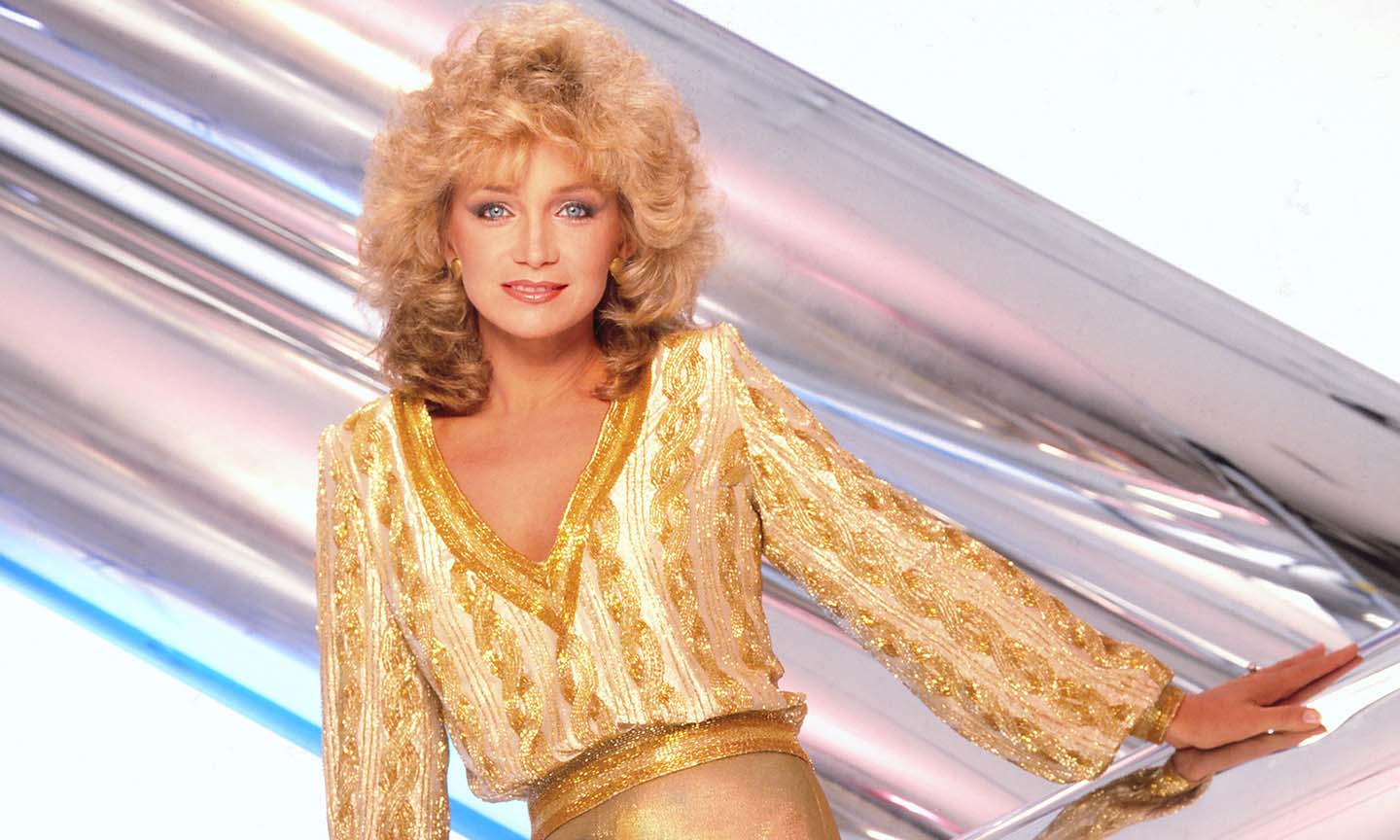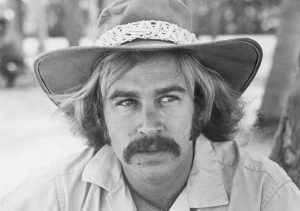The most important thing to understand about Barbara Mandrell is that she was a musical prodigy. Prodigy is, after all, the term most people would use to describe an 11-year-old who played pedal steel guitar (hardly a forgiving instrument) alongside adult professional musicians. Within a few years, she was joining Johnny Cash and Patsy Cline onstage to flaunt her skills.
Mandrell’s musical ability tends to get ignored because of just how commercially successful she was in the 1970s and 1980s, making songs that decidedly leaned toward the pop side of the country-pop spectrum. That music, retrospectively, is easy to appreciate for its genre agnosticism and experimentation, but at the time provoked a fair amount of backlash – a backlash that Mandrell would address with her best-known song.
Listen to the best Barbara Mandrell songs now.
Her skill and casual, agile voice made it easy for Mandrell to dabble in several different pop styles. But she never abandoned playing music. Every Barbara Mandrell show (and many of her appearances on the short-lived variety show she hosted with her sisters) featured the musician playing not just pedal steel, but banjo, dobro, mandolin, and even saxophone. In light of that versatility and her seemingly unstoppable run of hit songs, it’s no surprise that she became the first artist to win the CMA’s Entertainer of the Year award in back-to-back years.
Below are 20 of Mandrell’s best songs, ranging from throaty country-soul to twangy disco and everything in between.
“Married, But Not To Each Other,” Midnight Angel (1977)
As the title suggests, this country-pop single explores the moral and logistical quandaries of infidelity – and allowed Barbara Mandrell to refine the disco-tinged sound that would shortly bring her substantial commercial success. Shimmering strings are punctuated by more traditionally country instruments, while Mandrell’s powerful voice allows her to credibly cover an already-successful R&B tune to great effect. The song was Mandrell’s biggest hit to that point, reaching No. 3 on Billboard’s country chart.
“Standing Room Only,” This Is Barbara Mandrell (1975)
Barbara Mandrell’s first top five hit on Billboard’s country chart arrived with her first recordings at ABC/Dot Records, which were produced by Tom Collins – the same producer who would steer the most successful years of her career. This mournful single, complete with John Hughey’s distinctive “crying” pedal steel, allowed Mandrell to show her power and ability within a softer, more subtle range. Unlike most of her subsequent output, this single was much more country than pop, with a twang discernible even in its dramatic chorus.
“Woman to Woman,” Love’s Ups and Downs (1978)
As far as 70s pop goes, it doesn’t get better than Barbara Mandrell’s opening voiceover on this song. Like so many of her recordings, the song began its life as a soul recording. Mandrell sanded down most of what made Shirley Brown’s original Stax version so indelible, but her smoother rendition has its own charms. In less deft hands, it might’ve sounded over the top. Instead, it’s effective country soul, complete with pedal steel occasionally peeking out from behind the curtain of strings.
“Fast Lanes And Country Roads,” Get to the Heart (1985)
Barbara Mandrell continued her run of top ten hits with this irreverent, uptempo take on what has become an inescapable theme of pop country (dirt road supremacy). It is, inexplicably, more rock and roll than rootsy, but nevertheless, the lyrics are considerably sharper than they need to be – and Mandrell sells the blend of synths, gospel backing vocals, and pedal steel well.
“After Closing Time,” A Perfect Match (1970)
A shared producer in Billy Sherrill led to a series of collaborations between Barbara Mandrell and David Houston. While Houston was already at the top of the heap via the hit “Almost Persuaded,” Mandrell hadn’t even released her first album when they recorded this duet – an uptempo, goofy tribute to the power of a flirty waitress with a boyfriend. It became Mandrell’s first top ten hit on the country charts.
“Treat Him Right,” Treat Him Right (1971)
A hoe-down-ready take on the 1965 Roy Head hit song, “Treat Him Right” shows more of Barbara Mandrell’s early versatility. Rather than countrifying an R&B song, as she had done with some of her other singles to this point, she drew out the sweetness and seduction in a blues that already had a rockabilly bent. A little retro even for its time, the release nevertheless worked well for the still up-and-coming singer.
“Tonight My Baby’s Coming Home,” The Midnight Oil (1973)
Barbara Mandrell’s first solo top ten hit on the country charts was this surprisingly suggestive ode to a hunky trucker. Big rig-themed songs were trendy when she recorded this single, but that still doesn’t necessarily prepare the listener to hear about how “he’s got that big ol’ engine singing my favorite song.” Goofy innuendo aside, the song is fun and catchy, and its rollicking, uptempo sound is a welcome anomaly in the Mandrell catalog.
“Wish You Were Here,” Barbara Mandrell Live (1981)
There might not be a more seamless marriage of disco and genuine country than this understated Barbara Mandrell song off a live album recorded at the Roy Acuff Theater in Opryland. Her band, the Do-Rites, creates a gently grooving setting for the melancholy tune, which sees Mandrell lamenting the misfortune of having to drink pina coladas alone. For an example of Mandrell veering even further into disco, listen to the club-ready ”Sometime, Somewhere, Somehow” – released just a year prior to this track.
“Crackers,” Love Is Fair (1980)
There might not be a goofier or more honest chorus in pop music history than this one of Barbara Mandrell’s, penned by her frequent songwriters Kye Fleming and Dennis Morgan. Those who might have derided the bouncy tune could hardly deny that there are few more generous expressions of affection than allowing someone to eat crackers in your bed.
“I’ve Been Loving You Too Long (To Stop Now),” Treat Him Right (1969)
It’s pretty hard for anyone to cover Otis Redding, much less cover one of his most iconic songs – but Barbara Mandrell’s first charting single was a valiant attempt to do just that, one that stands well on its own (and sounds different enough not to instantly beg comparison). Her unforced rendition of the classic soul track showcases her effortless vocal ability and its lightly smoky quality that helps her versions of soul and R&B songs have convincing heft.
“The Midnight Oil,” The Midnight Oil (1973)
Talk about a liberated woman’s anthem – not only is the narrator in this Barbara Mandrell song working late instead of running home to her beau, but she’s also actually lying about working late to continue a torrid workplace affair. A gentle, almost folksy instrumental backs Mandrell as she croons some (fairly risqué) sweet nothings to her unsuspecting partner. The song was a hit on the country charts and led Mandrell to record a string of infidelity-centric singles.
“Darlin’,” Just for the Record (1979)
Barbara Mandrell’s singing rarely gets rawer than this unlikely cover, which she released just after David Rogers’ version entered American charts for the first time. The style couldn’t be more different than the disco-tinged pop and string-laden ballads that Mandrell was simultaneously bringing to the top of the country charts (and onto Billboard’s Hot 100). With gentle acoustic guitar and almost bluesy inflection, listeners get a glimpse of an almost completely different Barbara – an artist comfortable with marrying harmonica and synths to excellent effect.
“One Of A Kind Pair Of Fools,” Spun Gold (1983)
Barbara Mandrell’s last No. 1 country song signaled the fading influence of disco, with its strings and synths pushed to the background in favor of a bright electric guitar and a bouncy rather than groovy rhythm. The track, which describes two women unwittingly involved with the same man, was featured on one of the most successful albums of Mandrell’s career: Spun Gold reached No. 5 on Billboard’s country charts.
“No One Mends A Broken Heart Like You,” Moments (1986)
Though few artists could match Barbara Mandrell’s combination of vocal and instrumental prowess (and the specifically country bent of those talents), her willingness to experiment with pop crossover sounds still made her a convenient critical target – especially as the 1980s wore on, when the neotraditional backlash started to dominate the country radio zeitgeist. This single is a straightforward, understated country ballad that works as a perfect showcase for Mandrell’s voice. “No One Mends” has an easy simplicity that can be hard to find in her catalog.
“There’s No Love In Tennessee,” Greatest Hits (1985)
After suffering critical injuries in a 1984 car accident, Barbara Mandrell questioned whether or not she’d even continue making music – yet the following year, she was back in the studio to record this hit ballad. Blissfully free of the kind of schlock that had long plagued the genre, “Tennessee” is a deeply felt, evocative single that still begs repeat listens in spite of its heavy subject matter. It’s kept light by a barely two-step ready tempo and made memorable by its specific tributes to the Volunteer State.
“I Wish That I Could Fall In Love Today,” I’ll Be Your Jukebox (1988)
The native Texan might have been a couple of decades late in offering her first honky-tonk anthem, but this Harlan Howard-penned track (originally recorded by Ray Price in 1960) still sounded tailor-made for walking the floor when Barbara Mandrell brought the song to No. 5 on Billboard’s country chart. Mandrell hardly had to prove her country bona fides at this point, but the fact that her last top ten single was about as country as it gets was undoubtedly a perfect rejoinder to any naysayers.
“In Times Like These,” Spun Gold (1983)
“The rich keep getting richer, the poor barely get by,” Barbara Mandrell sings in this timeless ode to hard times (and the people who get us through them). There is a lot more depth to this song than might be obvious from its cheerful, rockabilly veneer, helping it climb the country charts in spite of its doomsday observations. “In Times” was released in the midst of Mandrell’s hot streak, when she was ruling country radio with her irresistible pop crossover sounds – which only made this roadhouse-ready track stand out even more.
“(If Loving You Is Wrong) I Don’t Want To Be Right,” Moods (1978)
Like many of her early songs, Barbara Mandrell’s biggest crossover hit had an extended first life as a massively successful R&B single. “I Don’t Want To Be Right” was written by Stax songwriters and first recorded by Luther Ingram in 1973, whose version reached No. 3 on Billboard’s Hot 100 and was subsequently covered by just about every R&B and blues singer under the sun. Mandrell’s version opens with a dramatic, seductive combination of bass in strings that sets up an evocative take on the sultry ballad only made convincing by the depth of Mandrell’s voice.
“Sleeping Single In A Double Bed,” Moods (1978)
This jaunty single tailor-made for exercise classes or movie montages was Barbara Mandrell’s first country No. 1 and the first of several hit singles written by Kye Fleming and Dennis Morgan. It took nearly a decade and a considerable stylistic shift, but Mandrell finally ascended to the top of country’s A-list. Considering that the song’s theme is loneliness and regret, the song is undeniably fun and catchy – no surprise, then, that it was revived several decades later via a Dave Audé dance remix.
“I Was Country When Country Wasn’t Cool,” Barbara Mandrell Live (1981)
This song, undoubtedly Barbara Mandrell’s most enduring, was released at the exact moment when the singer was at her most dominant – she was on TV alongside her sisters every week, and a fixture of the country charts’ upper echelons, thanks in large part to hit singles that were… scorned by country music purists. Alongside The Possum – George Jones – Mandrell sang about listening to the Opry and getting mocked for it in what would become an anthem for the authenticity-obsessed genre. Whether or not she was cool then, the song quickly became a smash, topping the country charts while helping the album become one of the most successful of her career.




